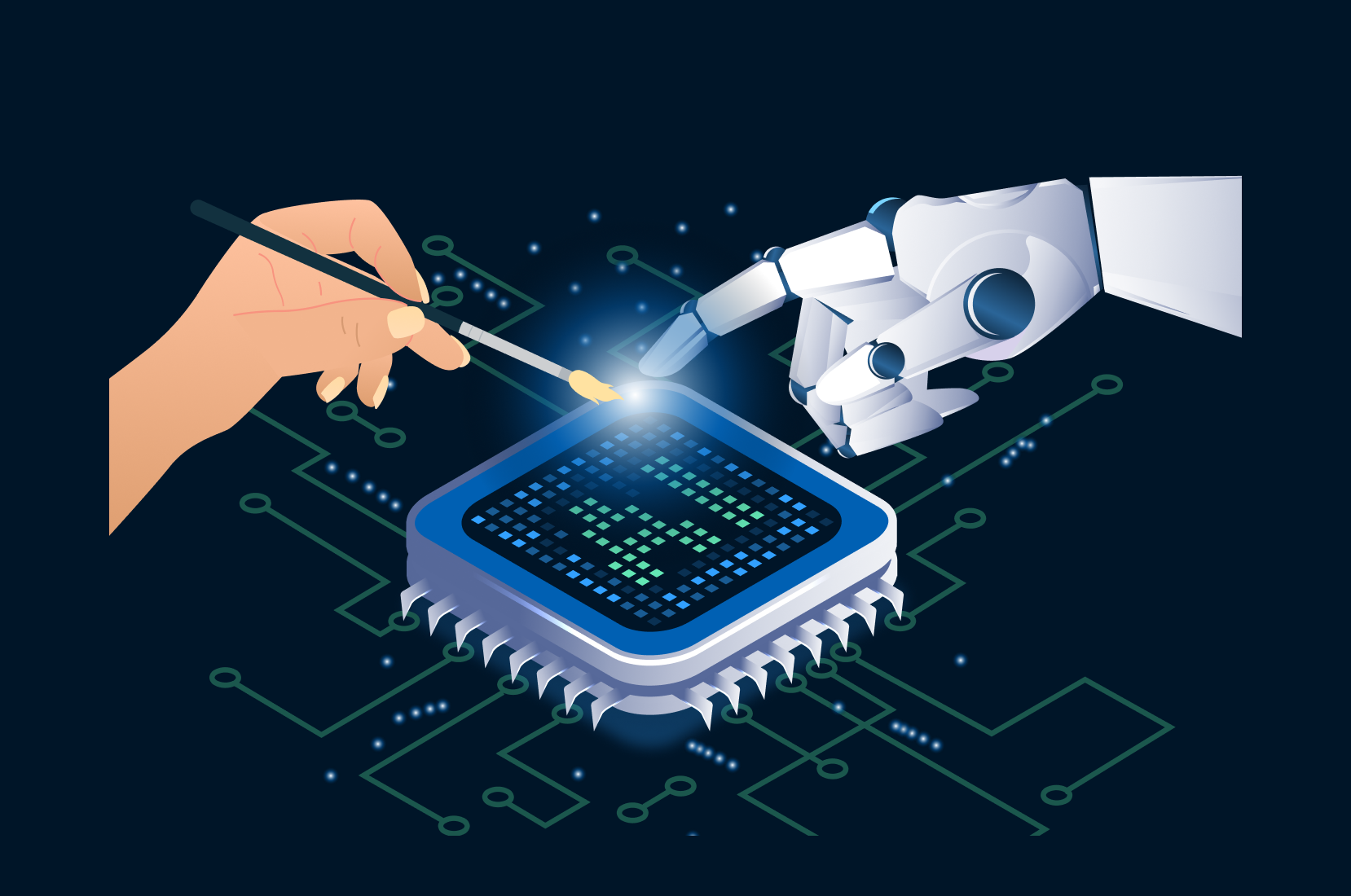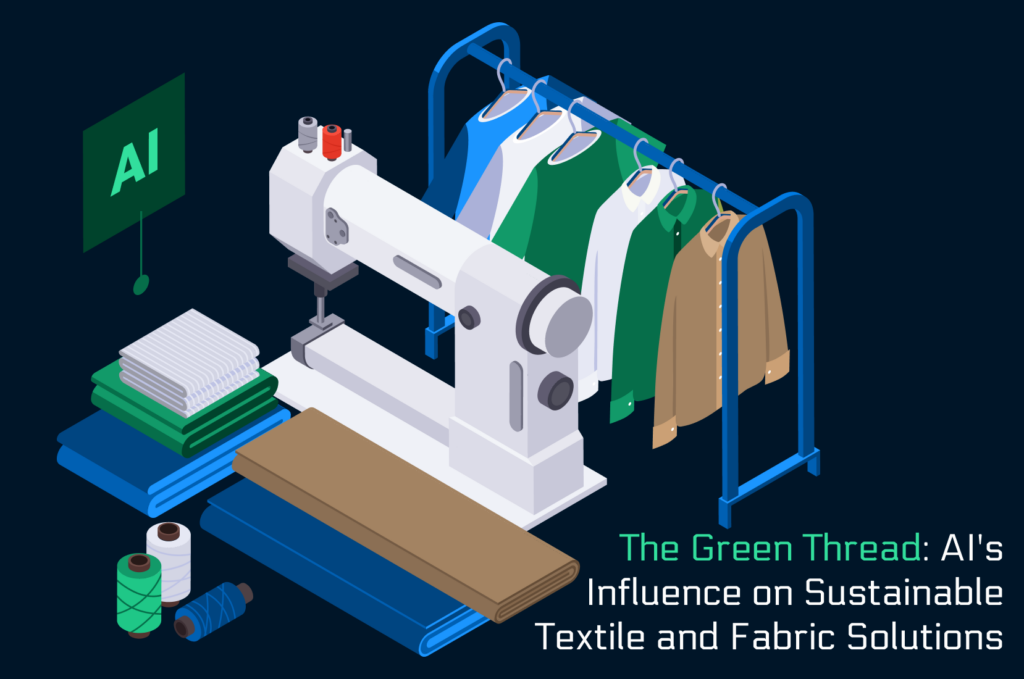Artificial Intelligence has been making significant strides in the creative industry, transforming various aspects of artistic expression, design, and content creation. AI algorithms can generate unique pieces of art, music, and literature. They are trained on existing artistic works and can produce novel creations that blend human and machine creativity.
The aim of new technologies is normally to make a specific process easier, more accurate, faster, or cheaper. So let’s see what non-obvious generative AI solutions you can find in the creative industries.
Fashion: New Breath
Generative AI possesses the capability to examine fashion trends and consumer preferences, aiding in the creation of clothing lines and the anticipation of forthcoming trends. It can analyze seemingly unconnected data to deliver new insights for creative organizations. Instead of exclusively depending on trend analyses and market evaluations to guide the conception of the next seasonal collection, creative directors of brands can use generative AI to instantly scrutinize various forms of unstructured information. For example, generative AI can swiftly conduct sentiment analysis on social media videos, or model trends using an assortment of consumer data sources.
Then, creative directors and their teams could input sketches and specific preferences—such as fabric choices, color schemes, and patterns. Generative AI would autonomously generate an array of designs, offering designers the opportunity to explore a variety of styles and looks. Based on these outcomes, design teams can develop novel pieces while infusing the distinctive essence of the fashion house into each of the envisioned ensembles.
So, generative AI can:
- convert sketches and descriptions into designs;
- generate creative options and new ideas from data (for example, past product lines with new ideas);
- customize products for individual consumers;
- analyze auditions favorites and products, that buy not so willingly;
- establish communication with customers through chat-bots;
- give insights into forthcoming trends.
Generative AI in the creative industries has the potential to affect the entire fashion ecosystem. Fashion companies can use the technology to help create better-selling designs, reduce marketing costs, hyperpersonalize customer communications, and speed up processes.

Game Design Assistance
Generative AI in game design involves the use of artificial intelligence algorithms to assist or automate various aspects of the game development process. So, what we can get?
Game content – levels, maps, landscapes, and environments that follow predefined rules. This approach is particularly useful for generating expansive game worlds with a high degree of variability and complexity. The great variety and detail of the maps help create more dynamic and engaging gameplay experiences.
Character and creature design – characters, creatures, and non-playable characters (NPCs). By analyzing existing designs from game developers, Generative AI in the creative industries can propose new character concepts, saving time and promoting originality.
Graphics – textures, visual effects, and other graphical elements that enhance the game’s visuals. This can range from creating realistic terrains to generating unique particle effects.
Sound. AI algorithms can compose music and generate sound effects that match the mood and atmosphere of the game. This can add depth to the gaming experience and enhance immersion.
Quest and Mission. AI can assist in creating quests, missions, and challenges by generating objectives, scenarios, and branching narratives. This can lead to more diverse and engaging storylines and gameplay experiences.
Narrative generation. AI can generate dialogues, character interactions, and narrative elements, which is particularly useful for games with branching storylines and player-driven narratives.
The most essential goal is rapid prototyping. AI-generated content can be used as a starting point for game development, allowing designers to quickly iterate and prototype different ideas. It enhances the efficiency of the development process and adds novel and unexpected elements that can lead to more creative and diverse gaming experiences. As a result – client satisfaction will rise and gaming rates will improve. It’s important to note that human creativity and expertise remain essential in shaping the overall vision and quality of the game.

Generative AI in Construction Design: a Strong Support
Generative AI in construction (generative design) makes easier the processes of creating object plans and takes into account many factors, that are really important and play a role in the next steps.
In order to plan and design the construction of a project, we need to take into consideration the architecture, engineering, mechanical, electrical, and plumbing (MEP) plans. The generative design ensures that the different models do not clash. The main merit of machine learning in this form is to identify and mitigate clashes between the various models. When the user sets up requirements in the model, the generative design software creates 3D models optimized for the constraints. It is hard for the human mind to keep track of all the combinations, when there are several possible variants. But generative design does it easily and well, learning from each iteration.
Generative design can automate the creation of different design solutions, which satisfy a variety of goals of the designer. It makes the initial project process easy. It can be used as drafts to discuss with stakeholders what they want to see in the final version. AI-powered tools can also assist designers by suggesting layouts, color palettes, typography, and other design elements. This speeds up the design process and offers fresh perspectives.

Modification of Marketing
Generative AI has greatly influenced the field of marketing. Many things can now be done faster and easier thanks to this. Marketers can focus on the core strategy and improving it, rather than obsessing over letter writing or similar work. Of course, they have to edit and control everything that generative AI creates. They are still required to prompt and edit the work. But just look at what generative AI can do:
- analyze user data and behavior to personalize marketing campaigns, tailoring content and visuals to individual preferences;
- assist in generating storylines, characters, and dialogues for various forms of media;
- generate written content that will be a base for the marketer and require less time than creating it from scratch;
- identify and predict trends;
- generate personalized marketing content based on unstructured data from consumer profiles and community insights;
- give individual consumers recommendations (for example recommendations for clothing styles according to body type and preferences);
- enhance chatbots, virtual assistants and self-service for consumer inquiries (for example, multilingual support).
Generative AI contributes a large share of positive and effective personalized customer communications. Companies that excel at personalization increase revenues by 40 percent compared with companies that don’t leverage personalization, according to McKinsey research.
Brilliant Hitting the Target
The Harvard Business Review reports that generative AI already has advanced capabilities across a broad range of creative content used in the marketing industry. The report states that major food manufacturers have already used AI-generated content in advertising campaigns.
Heinz asked DALL-E 2 to create versions of ketchup bottles in a series of artistic styles. The result was very similar to the original bottle that represents the product. In that way was created the idea to produce a video campaign ad – “Even A.I. knows that ketchup is Heinz”.

Source: Heinz A.I. Ketchup – YouTube
Can Generative AI Replace Human Work?
Much of the public discourse around generative AI and creative jobs has focused on the potential threats lose the workplace. Actually, this technology mostly automatizes monotone and repetitive work. But automation means a partial reduction of the processes performed by a person, so we will not get anywhere from this. Research from Goldman Sachs suggests that generative AI has the potential to automate 26% of work tasks in the arts, design, entertainment, media and sports sectors.
Actually, this technology brings opportunities in terms of enhanced productivity, efficiency and optimization of the creative process, saving time, money and increasing quality.

An Artificial Source of Inspiration
“It is not our goal to recreate the human mind—that’s not what we’re trying to do. What we’re more interested in are the techniques of interacting with humans that inspire creativity in humans,” – says Rob High, Vice President and Chief Technology Officer for IBM Watson.
What could we do to help people come up with new ideas on a much more regular basis than they do today? It’s the main question, that stands for using generative AI in creative industries. Generative AI insights can be not only an inspiration source, it can also help with more mundane tasks, where much of the behind-the-scenes work is far from glamorous. A recent survey by Adobe revealed that three-quarters of artists in the US, UK, Germany and Japan would consider using AI tools as assistants, in areas such as image search, editing, and other ‘non-creative’ tasks. This indicates that AI is recognized and perceived by society as an assistive tool for supporting humans rather than replacing them.
Conclusion
There’s no doubt that AI’s path in creative industries has just started. And while it will never replace the human soul of creativity, AI can certainly offer many benefits by serving as a smart, efficient and inspirational assistant.
AI can enhance and complement human creativity, taking on many related non-creative tasks and helping to inspire creators with new ideas and the combination of the seemingly incongruous.





